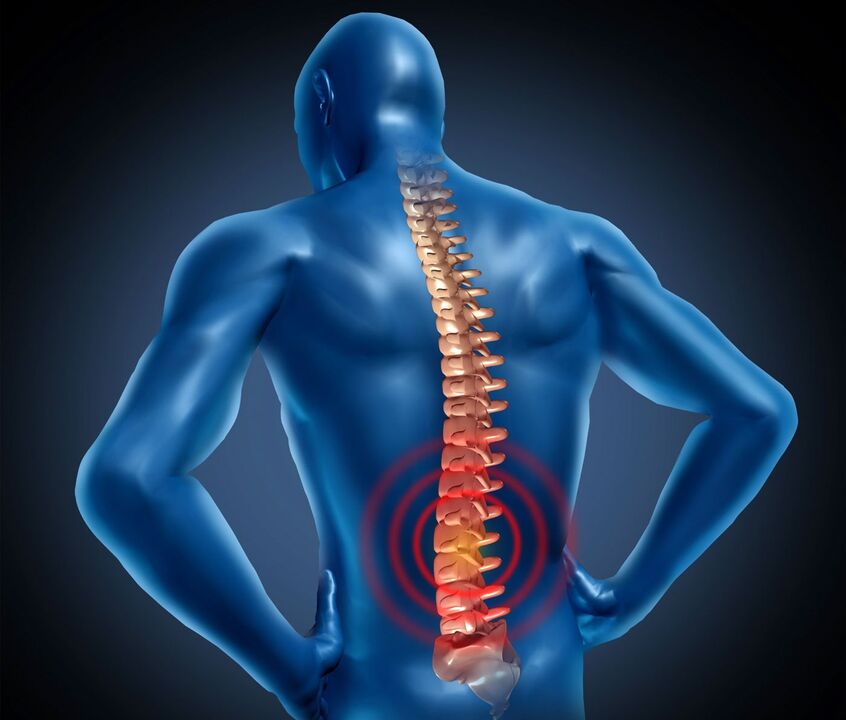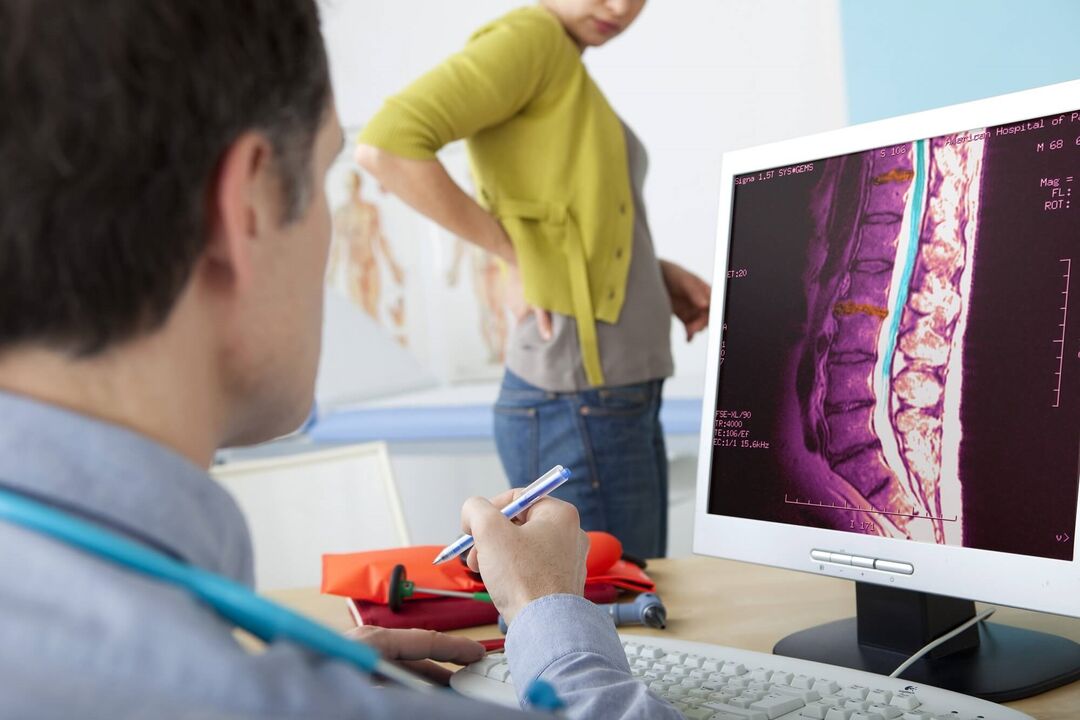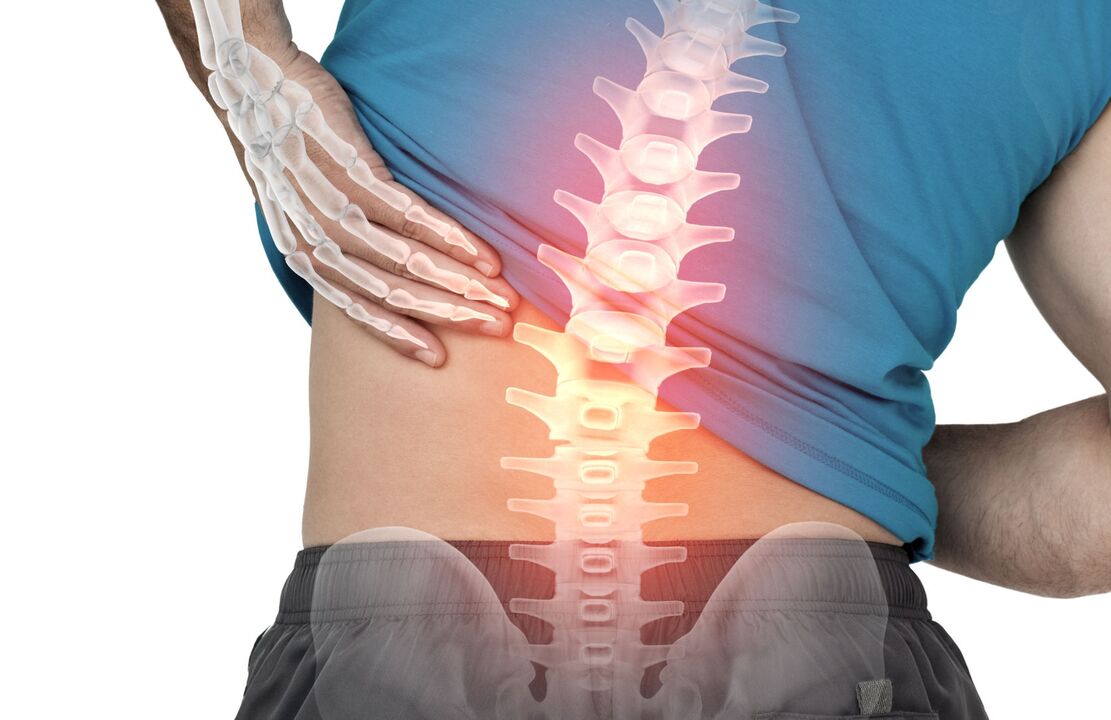The number of patients suffering from osteochondrosis increases every year, and the disease is irreversibly new - a few decades ago this problem was mainly related to the elderly, but now it often makes itself felt for those who do not have even 30. And one of its most common forms is ostochondrosis of the spine lumbar, which has maximum burden on the maximum.of the intervery.In addition to the constant pain that interferes with normal life, osteochondrosis without timely medical care is fraught with serious complications, which means it is very important to know its first signs in time and begin the fight against it.

Where does osteochondrosis come from
The question is far from simple because there are really many factors capable of provoking this disease.It can also be the physiological characteristics of the body, and an unhealthy lifestyle, diet or even a genetically established program.In general, one of the main reasons for the development of osteochondrosis of the lumbar region can be distinguished:
- Incorrect distribution of load on the spine (incorrect behavior, poor quality mattress or office chairs, etc.);
- sedentary lifestyle;
- frequent stresses;
- unhealthy habits;
- a weak diet, leading to the lack of necessary vitamins and trace elements;
- hypothermia;
- The pathology of the structure of the muscular system, for example, bending the spine, flat feet, etc.;
- overweight;
- violation of metabolism;
- Spine injuries;
- Trans transferred infectious diseases;
- Chronic inflammatory processes, associated mainly with common diseases;
- Genetic predisposition.
The risk group also includes people whose professional activities are accompanied by considerable burdens, for example, athletes and those who should be in the same position for a long time: teachers, office workers, drivers, waiters, hairdressing, etc.
Moreover, osteochondrosis often becomes the result of other diseases, for example, disorders in the liver or gastrointestinal tract (approximately 30% of patients), heart, and inflammation of the ovaries in women and prostatitis in men.In this case, existing pathologies provoke muscle and vascular pain, causing oxygen hunger and dystrophic changes.Therefore, the fabrics that form the beads and intervertebral discs, suffering from lack of food, gradually develop - develops the osteochondrosis of the lumbar region.
Symptoms of the disease
In what signs can be recognized in an osteochondrosis person of the lumbar spine, and is it realistic to do so until the disease acquires momentum?Unfortunately, in the early stages, this disease in many cases continues almost asymptomatic, and a slight embarrassment in the back occasionally is most often written about normal fatigue.This is its main risk - while osteochondrosis can still face without consequences, it is difficult to detect, and when the problem becomes apparent, it is much more difficult to slow pathological processes.
The most important sign of this pathology is a severe back pain, often spreading throughout the spine, buttocks and feet.In the early stages, it is mostly hurt or pull, and occurs only after physical exercise or sudden movements.Over time, periods of relative drowsiness, when the patient does not feel pain and discomfort, become shorter and gradually unpleasant sensations in the lower back are transformed into his permanent companions.In addition, there are irritations, when the pain becomes severe and sharp, and even the most trivial load can provoke an attack, up to cough or sneezing.
There are additional signs of lumbar osteochondrosis:
- stiffness of movements;
- decreased sensitivity and tingling in the foot;
- sweating violation;
- muscle weakness;
- Dry and peel from the skin.
In the last stages, patients may have difficulty controlling urination and defecation due to the peak of the spinal cord, and male patients have erectile dysfunction.
The degree of lumbar osteochondrosis

In total, the 4 main stages of the development of the disease are distinguished.For 1, deformation of the intervertebral discs is poorly expressed - these are small cracks within the fibrous ring, which cause unpleasant sensations.The osteochondrosis of the scale of 1 is characterized by paroxysmal pain, which occurs only with sharp movements and lifting weights.We are talking about Lumbago, ie, bastard at the bottom of the back in response to an attempt to change the unpleasant position of the body.In addition, at 1 stage of the disease, patients often suffer from muscle cramps and swelling.
Lumbar 2 -degree lumbar osteochondrosis begins with lumbalgia - pain and discomfort grow and appear regularly, and to improve well -being, it is not just enough to lie down and rest.The process of destruction of the fibrous ring continues, and the vertebrae itself acquires unhealthy mobility - the distance between them decreases, and the nerve endings are rounded.As a result, the patient has severe pain as well as an alternative sensation of heat and cold, increasing sweating and numbness of the skin.
Phase 3 of osteochondrosis is the period of formation of intervertebral hernia.The fibrous ring breaks down and the contents of the nucleus, pushing vessels and nerve roots, falls out.At the same time, the patient tries by acute pains that follow him almost over and over again.Periodically, in the affected area, sensitivity decreases or disappears completely, and in other cases, on the contrary, may increase with pain and associate with a sensation of sensitivity and burning.At this stage of osteochondrosis, even a non -specialist may notice spinal deformity - patients develop spinal column according to the type of lordosis, kyfosis or scoliosis.
The 4th degree of the disease is more severe - the spine is highly deformed, patients suffer from persistent pain, and any movement to become a real problem.This is due to the almost complete destruction of the intervertebral discs, as a result of which the beads are maximally converged or even in contact with one another.In this case, squeezing the spinal cord may result in paralysis of the lower extremities.If you do not start treatment on time, going to the 4th phase, osteochondrosis is able to make a person a disabled person for the rest of his life.
Diagnosis of osteochondrosis

With back pain, most patients first go for tips for therapist, which, if there are appropriate symptoms, sends them for further examination to a neurologist.He, in turn, performs an inspection, collects an anamnesis and describes hardware studies to make an accurate diagnosis and determine the degree of neglect of the disease.
During the collection of anamnesis, the main task of the specialist is to detect the nature of unpleasant sensations, localization, their intensity and duration, and also to understand what frequency the disease irritations occur, which, as a rule, preparations, and what measures bring relief to the patient.Also, to make a diagnosis, the patient's lifestyle, his or her usual diet, the features of professional activity, existing injuries and diseases, including hereditary ones, are important.
Inspection allows you to evaluate the patient's motor skills (behavior, walking, volume of movements), the presence of tone and muscle boats, and determine the level of sensitivity in the affected area.
However, you can only get a full picture with the help of hardware research: Radiography, CT and MRI.X -Ray allows you to see violations of the spine structures, evaluate the condition of the intervertebral discs and timely to recognize the tendency to reduce the lumen between the vertebrae.The tomography calculated in this case is more informative - makes it possible to look literally inside the spine and study existing pathologies.And MRI, on the other hand, gives exhaustive information about the condition of the spinal cord, nerve endings, muscles and blood vessels, which is extremely important not only to diagnose "lumbar osteochondrosis", but also to determine the degree of neglect of the disease.
Treatment methods

To successfully cope with lumbar osteochondrosis, patients need complex therapy, including medication treatment, physiotherapeutic procedures, special gymnastics, massage, and the use of traditional medicine recipes that improve the effect of using traditional methods.
The priority task to be selected by starting the treatment of lumbar osteochondrosis is to relieve pain syndrome, since during the irritation of the disease many therapeutic methods, such as physiotherapy and exercise therapy cannot be used.For this purpose, patients are prescribed soothing and injections, as well as non -steroidal anti -inflammatory drugs.The latter is the main ingredient of the treatment of osteochondrosis medication - they face not only its symptoms but also affect the causes that provoke their appearance.In the most difficult cases, glucocorticosteroids are used to combat the inflammatory process, which are often directly introduced into deep tissues in the area of damage along with novocaine or lidocaine.
Moreover, patients with osteochondrosis need preparation for the removal of muscle spasms - anticonvulsant and relaxing muscle, chondroprotectors that restore damaged stalk tissue, and group B vitamins that strengthen the body's protective functions and reduce inflammation.
After paining the pain, physiotherapeutic procedures come to the forefront in the treatment of osteochondrosis.We are talking about the use of laser therapy, magnetotherapy, ultrasound, electrophoresis, acupuncture, mud baths, paraffin applications, etc., which effectively cope with discomfort and pain and regulate the result obtained from taking medication.
An important place in the fight against the Lumbar region's osteochondrosis is deviated with physiotherapy exercises - undergoing regular execution, the exercises specially designed for such a case significantly improve the patient's condition, restoring the freedom of movement almost entirely.And professional massage will help to consolidate the successes that achieve muscle cramps perfectly.Non -traditional medicine, which offers osteochondrosis, is playing an not last role in this issue, not only effective in combating this disease, but also safer than many synthetic medicines.
Why is lumbar osteochondrosis dangerous?

In addition to intense pain, which often causes a patient's life with truly unbearable lumbar osteochondrosis, people with such a diagnosis are limited by motor skills, and in the ultimate stages of the disease, some may be completely lost.We are talking about the paralysis of the lower extremities, which can develop as a result of compression of the spinal cord.In the most extreme case, osteochondrosis is also able to lead to death if there is significant damage to the spinal cord shell.
But without reaching 4 stages, lumbar osteochondrosis seriously undermines human health.It often ends with the formation of intervertebral hernias, requiring prolonged and complex treatment, and in some cases, and surgical intervention.Moreover, squeezing blood vessels, which is characteristic of osteochondrosis, can lead to the formation of dangerous stagnation and violate the work of other internal organs.In patients with such a diagnosis, the genitourinary system often suffers - lumbar osteochondrosis is able to provoke problems with ovaries, uterus and supplements in women and erectile dysfunction in men.
It is clear that over time to recognize the symptoms of osteochondrosis, seek help and begin its complex treatment - the task is extremely important.But the role of prevention is no less important in this matter - with its help you can reduce the risk of developing the disease and maintaining good health.We are talking about regular but moderate physical exercise, a healthy lifestyle, a balanced diet, compliance with drinking regime, and specialist examinations that can identify potential problems at the earliest stages.
It should be remembered that the osteochondrosis of the lumbar region is a serious disease, which is extremely dangerous for health to ignore the symptoms of which.Only by knowing the disease in time and starting treatment, you can slow down pathological processes and turn the patient to guide the opportunity to guide the usual lifestyle.Otherwise, the consequences may be the worst, to the disability, for which the patient will no longer be able to get rid of.

























